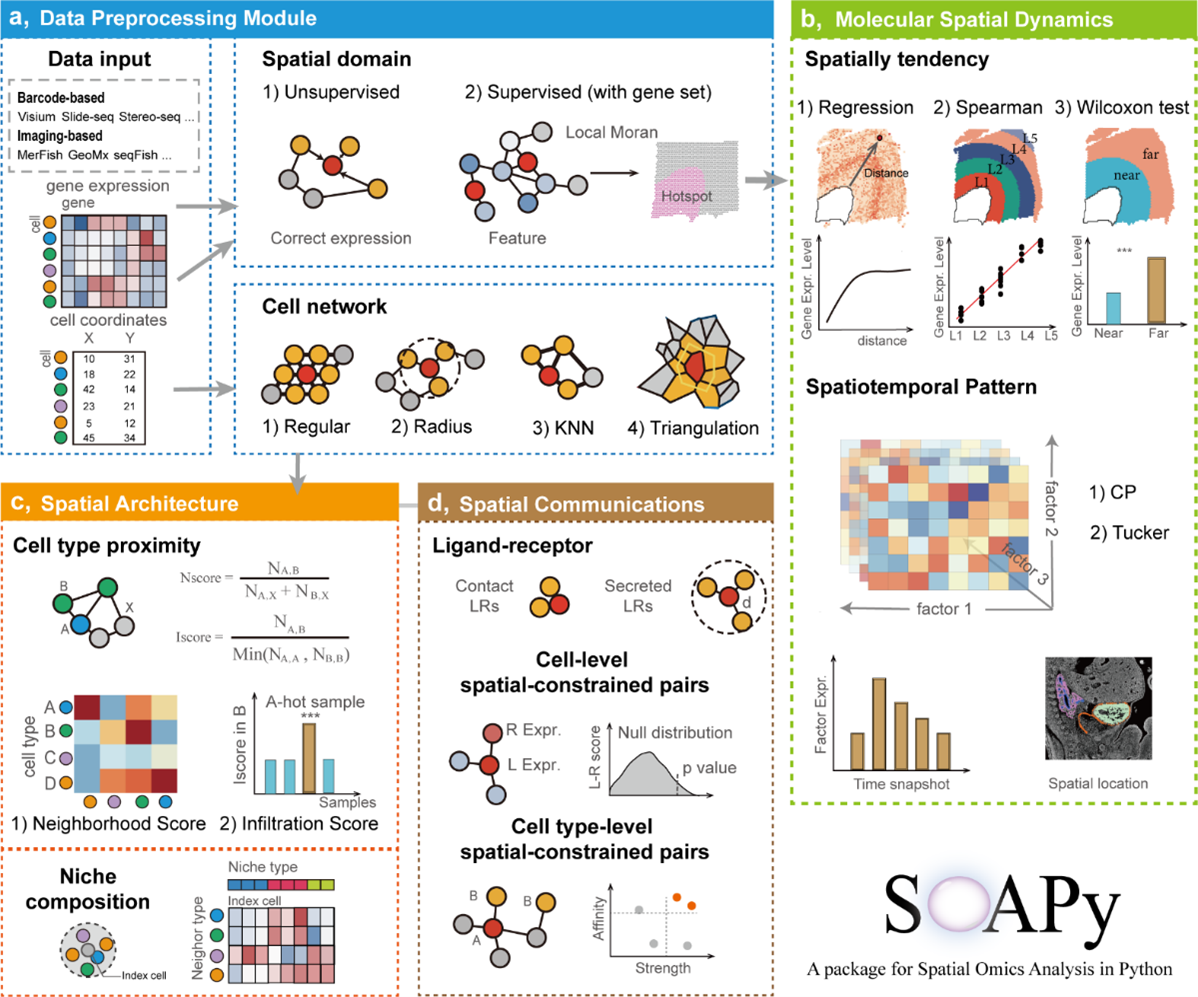A New Toolkit Accelerates Microenvironment Analysis for Spatial Omics
A research team led by Prof. LI Hong from Shanghai Institute of Nutrition and Health (SINH) of the Chinese Academy of Sciences, developed and released a new toolkit named “SOAPy” for analyzing spatial omics data. Entitled “SOAPy: a Python Package to Dissect Spatial Architecture, Dynamics and Communication”, this study was published in Genome Biology on March 29th, 2025.
Spatial organization and microenvironment are important for understanding the tissues in normal and disease states. Spatial omics, especially spatial transcriptomes have become popular in recent years, but extracting useful information from these complex spatial data is still challenging. Previous algorithms were often designed for one specific task, thus a toolkit for the integrative analysis of microenvironmental spatial organization is in an urgent need.
Prof Li’s group developed a Python package named “SOAPy”, which integrates and develops a suite of algorithms to investigate gene expression variability and cell type distribution heterogeneity in spatial omics.
SOAPy provides methods for spatial domain identification, spatial expression tendency, spatiotemporal expression pattern, cellular co-localization, multi-cellular niches, and cell–cell communication. SOAPy can be applied to various spatial omics technologies and multiple areas in physiological and pathological contexts, such as tumor biology and development biology.
In addition to the diverse functions and extensive application scenarios of SOAPy, the newly proposed ligand-receptor communication analysis takes into account the difference between secreted and membrane-binding proteins, which is more biologically interpretable and remarkably reduce false positive rate.
“We developed this toolkit to dissect the latent biological characteristics from multiple spatial perspectives”, Prof Li said, “Even users who are not familiar with the spatial omics technology can rapidly conduct in-depth analyses using SOAPy”.
In summary, this study presents a valuable tool for spatial omics analysis, facilitating the dissection of microenvironment architecture and deepening biological insights.

Schematic diagram of SOAPy. (Image provided by Prof. Li's group)
Scientific Contact:
LI Hong, Ph.D.,
Professor
Shanghai Institute of Nutrition and Health,
Chinese Academy of Sciences
Email: lihong01@sinh.ac.cn
Media Contact:
WANG Jin
Shanghai Institute of Nutrition and Health,
Chinese Academy of Sciences
Email: wangjin01@sinh.ac.cn
Web: http://english.sinh.cas.cn/

